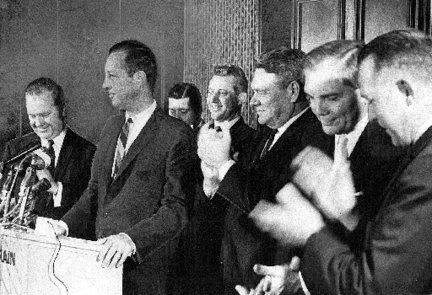|
Today in New Orleans History |
|
|
January 9


 New Orleans' NFL Team Officially
Named the "Saints"
 

To receive an update for each day in New Orleans history,
join our facebook page - Today in New
Orleans History
Photos of the Krewe of Mecca ball, held in the Municipal Auditorium on January 9, 1969. Frank "Big Boy" Goudie (September 13, 1899 – January 9, 1964)
was an American jazz trumpeter, alto and tenor saxophonist and clarinetist. He was born in Youngsville, Louisiana
where he lived until age 8. His family moved to New Orleans, where he began playing cornet, possibly studying with Bunk
Johnson. He became proficient enough to find work with local bands such as Papa Celestin's Original Tuxedo Band and the Magnolia
Band - two top bands in New Orleans at that time. He began studying clarinet and tenor saxophone, which would eventually become
his primary instruments. Photos of the Audubon zoo and tennis courts on January 9, 1940. Photos of the Canal Boulevard Sunken Garden on January 9, 1940. Photos of the inner harbor at West End on January 9, 1940.
Photo of New Orleans police Detective Richard H. Kirwin who entered the department on January 9, 1877 and was detailed as detective on April 1, 1889. Andrew Jackson arrived on board the steamer “Vicksburg” on January 8, 1840 at ten o’clock in the morning, landing at the Carrollton wharf, where an immense throng had assembled to welcome “the most distinguished citizen of the country.” The specific reason for his presence was that a cornerstone was to be laid, commemorating his victories in the Battle of New Orleans, a quarter of a century before. General Jackson laid the cornerstone in the Place d’Armes, on January 9, 1840. It was not until some years later that the monument decided upon was the one of Jackson, designed by Clark Mills, which stands in the center of the ancient parade grounds for the troops. This statue has been called the “center piece of one of the finest architectural sittings in the world.” (NOPL) The Siege of Fort St. Philip lasted from January 9 to January 18, 1815 just after the British defeat at the Battle of New Orleans. It was an American victory which, like the Battle of New Orleans, had been fought after peace had been proclaimed but news of this failed to reach the fighters. Charles Étienne Arthur Gayarré was an American historian, attorney and politician born to
a French Creole planter's family in New Orleans, Louisiana. A historian and a writer of plays, essays, and novels, to which
he devoted his life after the age of 29, he is chiefly remembered for his histories of Louisiana. The grandson of
Étienne de Boré, he was born on January 9, 1805 at the Boré plantation, which was then
outside the city limits of New Orleans. (It has long been incorporated into the city as Audubon Park.) After studying at
the College d' Orléans he began in 1826 to study law in Philadelphia, Pennsylvania, and three
years later was admitted to the bar. In 1830 he was elected a member of the Louisiana House of Representatives; in 1831 was
appointed deputy attorney general of his state; in 1833 he became presiding judge of the city court of New Orleans; and in
1834 he was elected as a Jackson Democrat to the United States Senate. On account of ill-health,
however, he immediately resigned without taking his seat. For the next eight years, he traveled in Europe and collected historical
material from the French and the Spanish archives. In 1844-1845 and in 1856-1857 he was elected again as a Democratic
Party member of the state House of Representatives, and from 1845 to 1853 was appointed as Secretary of State of Louisiana.
In 1853 he failed to be elected to the U.S. Congress, but remained active in Louisiana politics as an ally of John Slidell
in the "Regular Democratic" movement. He supported the Confederacy during the Civil War, in which he lost a large
fortune. In the postwar years, he lived chiefly by his pen. In 1863 he proposed that the slaves be emancipated and armed,
provided that France and England recognized the Confederacy. He had a long-standing association with the Louisiana
Historical Society, of which he was President from 1860 to 1888. He died in New Orleans on February 11, 1895.
He wrote Histoire de la Louisiane (1847); Romance of the History of Louisiana (1848); Louisiana: its
Colonial History and Romance (1851), reprinted in A History of Louisiana; History of Louisiana: the Spanish
Domination (1854); Philip II of Spain (1866); and A History of Louisiana (4 vols., 1866), the last
collecting and adding to his earlier works in this field. The whole covered the history of Louisiana from its earliest discovery
by Europeans to 1861. He wrote also several dramas and romances, the best of the latter being
Fernando de Lemos (1872). |
|
|

To receive an update for each day in New Orleans history,
join our facebook page - Today in New
Orleans History.
Analytics |


